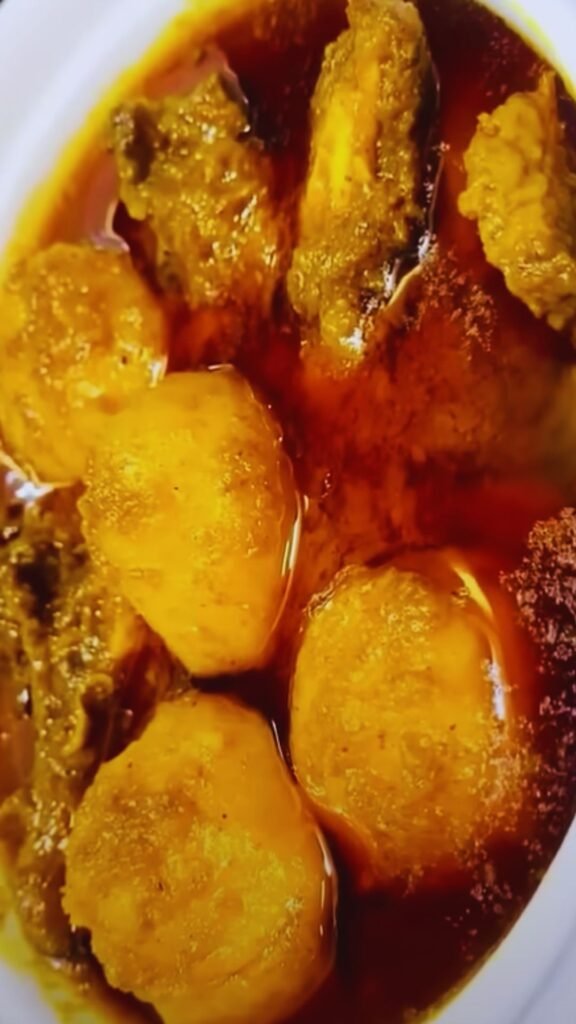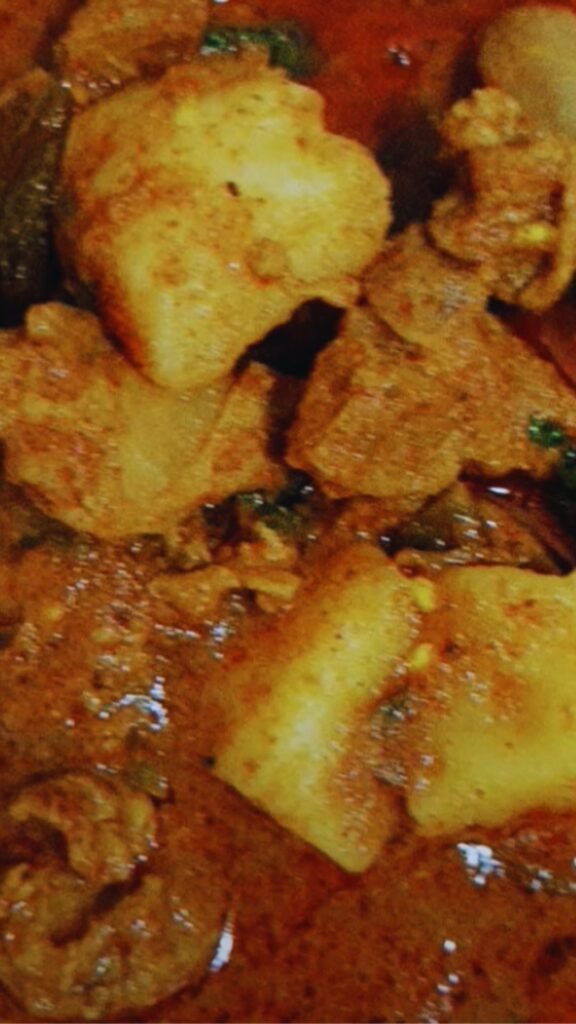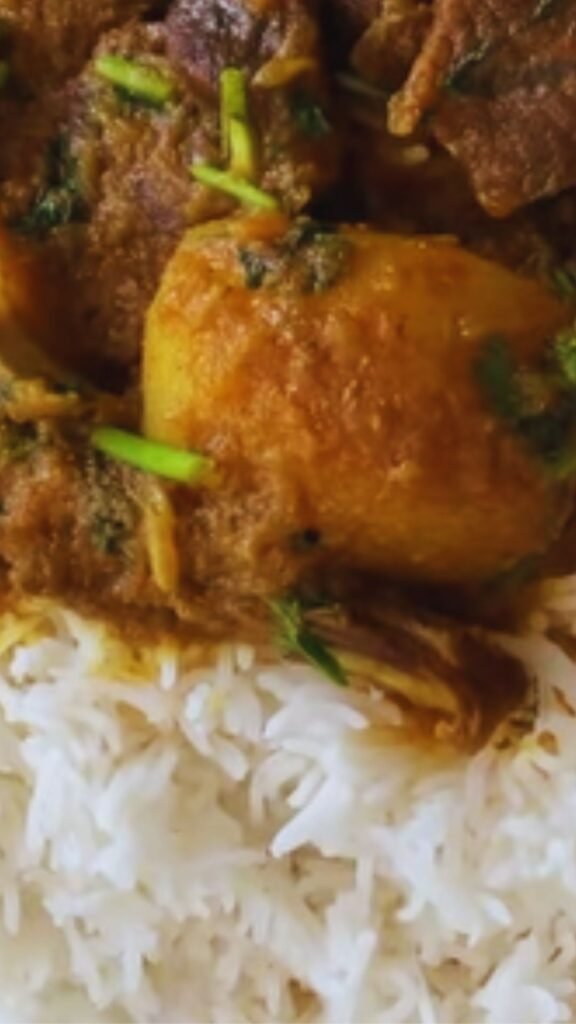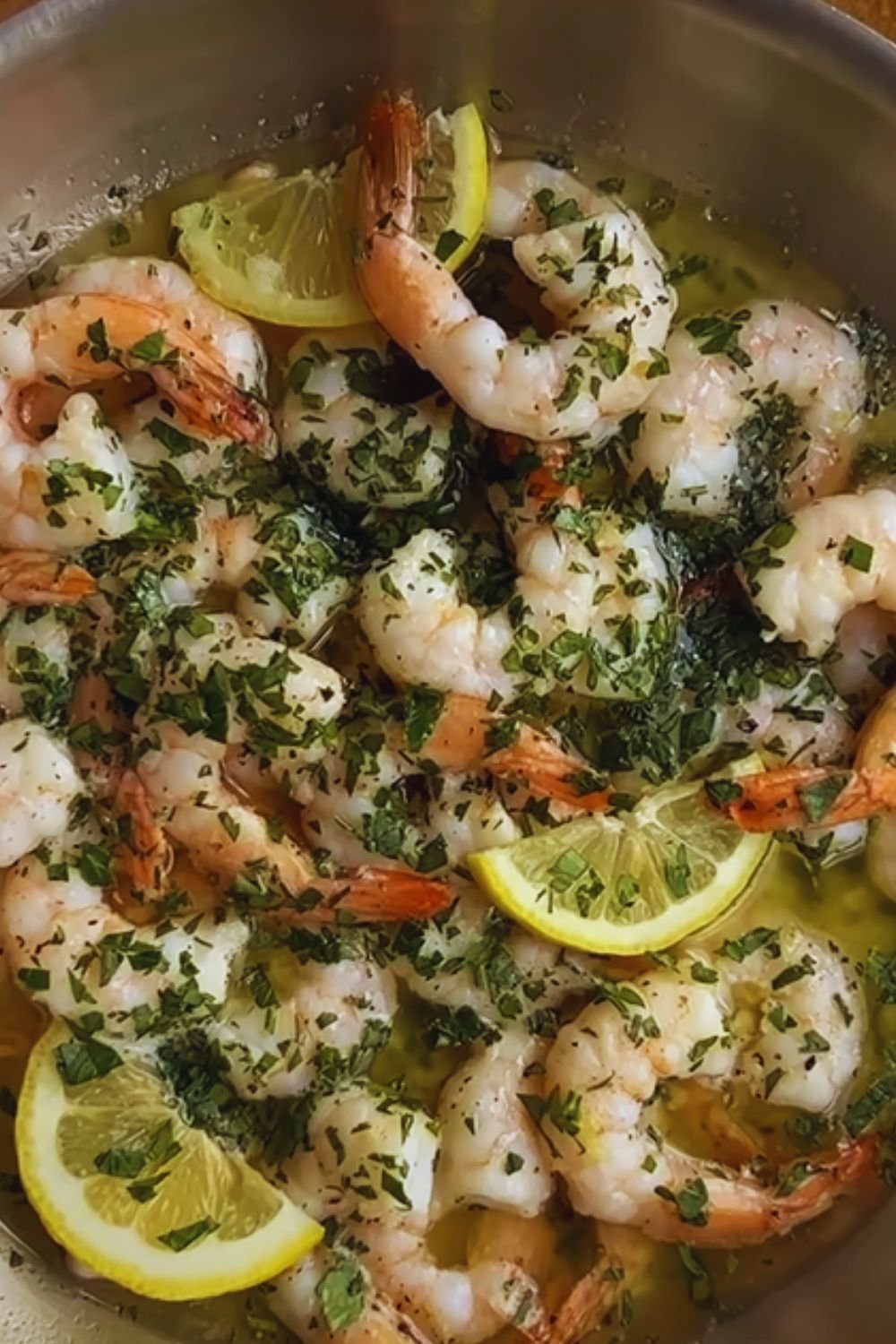There’s something magical about walking into a kitchen filled with the rich, aromatic spices of a simmering pot of Aloo Gosht. As someone who has spent years perfecting this classic dish, I can tell you that few recipes capture the essence of South Asian cooking quite like this hearty mutton and potato curry. Whether you call it by its Urdu name “Aloo Gosht” or simply “meat and potato curry,” this dish holds a special place in countless households across Pakistan, India, Bangladesh, and beyond.
What is Aloo Gosht?
Aloo Gosht is a rich, deeply flavorful curry made with tender pieces of mutton or lamb slow-cooked with potatoes in a fragrant gravy of onions, tomatoes, ginger, garlic, and a carefully balanced blend of spices. The name itself reveals its essence – “Aloo” means potato and “Gosht” refers to meat in Urdu and Hindi.
What makes this dish truly special is how the potatoes absorb the meaty flavors while simultaneously breaking down slightly to thicken the gravy. Meanwhile, the meat becomes incredibly tender through the slow cooking process, creating a harmony of textures and tastes that exemplifies comfort food at its finest.
The Cultural Significance
I’ve always found that Aloo Gosht is more than just a recipe – it’s a cultural institution. In Pakistan, where this dish is particularly revered, it frequently appears at family gatherings, religious celebrations, and casual Sunday dinners alike. It’s one of those dishes that transcends social boundaries, appearing on both everyday dinner tables and at elaborate wedding feasts.
Each region and family has their own variation, making it a dish with countless interpretations. Some make it drier, others prefer it with a more abundant gravy. Some add yogurt for tanginess, while others swear by using only tomatoes for acidity. These variations speak to the beauty of South Asian cooking – recipes evolve through generations, with each family adding their unique touch.
Essential Ingredients for Authentic Aloo Gosht
The key to exceptional Aloo Gosht lies in selecting quality ingredients. Let me walk you through what you’ll need:
For the Meat Base:
- 1 kg mutton or lamb (preferably with bone for extra flavor)
- 500g potatoes
- 3 medium onions, finely sliced
- 4 medium tomatoes, chopped
- 2 tablespoons ginger-garlic paste (freshly made is best)
- 2-4 green chilies (adjust according to heat preference)
The Spice Blend:
- 1 teaspoon cumin seeds
- 1 teaspoon coriander powder
- 1 teaspoon red chili powder (adjust to taste)
- 1/2 teaspoon turmeric powder
- 1 teaspoon garam masala
- 2 bay leaves
- 4-5 whole black peppercorns
- 2-3 cloves
- 1 small cinnamon stick
- 1-2 black cardamom pods (optional but highly recommended)
Additional Ingredients:
- 1/2 cup yogurt (optional)
- Fresh coriander for garnishing
- 1/4 cup oil or ghee
- Salt to taste

The Art of Meat Selection
I’ve learned through numerous attempts that the cut of meat significantly impacts the final dish. For the most authentic Aloo Gosht experience, I recommend:
Mutton or Lamb Cuts: : Shoulder or leg pieces with bone-in provide the best flavor. The marrow from the bones enriches the gravy during cooking, creating a depth that boneless meat simply cannot match.
Meat Quality: : Fresh meat from a trusted butcher will always yield better results than frozen options. Look for meat with a bright color and firm texture.
Meat Size: : Ask your butcher to cut the meat into medium-sized pieces (about 1.5 inches). Pieces that are too small will disintegrate during cooking, while pieces that are too large will take longer to tenderize.
Potato Primer
The humble potato plays an equal starring role in this dish. Here’s what I’ve discovered about selecting and preparing potatoes for the perfect Aloo Gosht:
Potato Variety: : Waxy potatoes like Yukon Gold or red potatoes hold their shape better during the long cooking process, while still breaking down enough to thicken the gravy.
Preparation: : Peel and cut potatoes into large chunks (about 1.5-2 inches). If cut too small, they’ll completely disintegrate into the gravy.
Timing: : Add potatoes about 30 minutes after the meat begins cooking. This ensures the meat has time to tenderize while preventing the potatoes from becoming overly mushy.
Traditional Cooking Method: Step by Step
After years of making this dish, I’ve refined my process to ensure consistent, spectacular results. Here’s my detailed method:
- Heat oil or ghee in a heavy-bottomed pot over medium heat.
- Add the whole spices (cumin seeds, bay leaves, cinnamon, cloves, cardamom, peppercorns) and sauté until fragrant (about 30 seconds).
- Add sliced onions and fry until deep golden brown (about 15-20 minutes). This step is crucial for the flavor base and color of your curry.
- Add the ginger-garlic paste and green chilies, cooking until the raw smell disappears (about 2 minutes).
- Add the meat pieces and sear on high heat until they change color (about 5 minutes).
- Reduce heat and add turmeric, coriander powder, and red chili powder. Stir well to coat the meat.
- Add chopped tomatoes and cook until they soften and oil begins to separate (about 10 minutes).
- If using yogurt, beat it until smooth and add it now, stirring continuously to prevent curdling.
- Add 2 cups of hot water, bring to a boil, then reduce heat, cover, and simmer for about 30 minutes.
- Add potato chunks, salt to taste, and continue cooking until both meat and potatoes are tender (approximately 20-30 more minutes).
- Sprinkle garam masala over the curry in the last 5 minutes of cooking.
- Garnish with fresh coriander leaves before serving.
Total cooking time is approximately 1.5 to 2 hours, depending on the meat quality and your desired tenderness.
Pressure Cooker Variation
On busy weeknights when I’m craving Aloo Gosht but short on time, I turn to my pressure cooker. Here’s my time-saving method:
- Follow steps 1-7 from the traditional method.
- Add meat, 1.5 cups of water, and close the pressure cooker.
- Cook for 3-4 whistles on medium heat (about 15-20 minutes).
- Release pressure naturally, open the lid, and add potatoes.
- Close again and cook for 1 whistle (about 5 minutes).
- Finish with garam masala and garnish with coriander.
This method cuts cooking time to under an hour while still delivering excellent flavor.
Instant Pot Modern Adaptation
For those with an Instant Pot, I’ve adapted this traditional recipe for even more convenience:
- Use the Sauté function for steps 1-7 from the traditional method.
- Add meat and 1.5 cups of water.
- Pressure cook on High for 15 minutes, followed by a 10-minute natural pressure release.
- Open the lid, add potatoes, and pressure cook for an additional 5 minutes.
- Quick-release pressure, switch to Sauté mode, and simmer if the gravy needs thickening.
- Finish with garam masala and coriander.
Regional Variations of Aloo Gosht
Through my culinary explorations, I’ve encountered fascinating regional adaptations of this classic dish:
| Region | Distinctive Features | Key Ingredients | Cooking Method |
|---|---|---|---|
| Punjabi Style | Rich, thick gravy with generous spices | Yogurt base, abundant ginger and garlic, sometimes includes kasuri methi (dried fenugreek leaves) | Slow-cooked in a handi (clay pot) |
| Kashmiri Style | Milder, aromatic with distinct flavor | Uses Kashmiri red chili for color without heat, incorporates fennel seeds | Often cooked over low flame for 3+ hours |
| Sindhi Style | Tangier profile with thinner gravy | Includes kokum or tamarind for sourness, more tomatoes | Covered cooking with occasional stirring |
| Hyderabadi Style | Spicier with complex layering | Incorporates stone flower (pathar ke phool) and coconut paste | Dum cooking (sealed pot) for final stage |
| Bengali Style | Sweeter notes with distinctive spicing | Incorporates panch phoron (five-spice blend) and sometimes a little sugar | Uses mustard oil as base |
Common Pitfalls and Solutions
Even experienced cooks encounter challenges with Aloo Gosht. Here are solutions to the most common issues:
Tough Meat: : This usually happens when cooking at too high a temperature or for insufficient time. Always simmer gently and be patient – good Aloo Gosht cannot be rushed. If your meat is still tough after the recommended cooking time, continue simmering with an additional half cup of water until tender.
Potatoes Disintegrating: : Add potatoes later in the cooking process and choose waxy varieties. If your potatoes still break down too much, try parboiling them separately and adding them just 10 minutes before the dish is complete.
Curdled Yogurt: : Always beat yogurt thoroughly before adding, use room temperature yogurt, and reduce heat when incorporating it. A teaspoon of cornstarch mixed into the yogurt can also help prevent curdling.
Bland Flavor: : This classic issue often results from insufficient browning of onions or inadequate cooking of the masala base. Ensure you properly brown onions to a deep golden color and fully cook the tomato-spice mixture until oil separates.
Thin Gravy: : If your gravy is too thin, remove the lid and simmer on low heat to reduce. Alternatively, mash 1-2 cooked potato pieces and stir them back into the gravy as a natural thickener.
Serving Suggestions and Accompaniments
The beauty of Aloo Gosht lies not just in its own flavors but how it pairs with complementary dishes. Here’s how I love to serve it:
Traditional Pairings:
- Fresh, hot naan bread or roti
- Steamed basmati rice
- Zeera (cumin) rice for special occasions
- Raita (yogurt with cucumber and mint)
- Kachumber salad (diced cucumber, onion, and tomato with lemon juice)
For a complete feast, consider adding:
- Daal (lentil dish)
- Vegetable side dish like okra or eggplant
- Pickled onions or achaar (South Asian pickle)
- Fresh herbs (mint, cilantro)

Health Benefits and Nutritional Value
While Aloo Gosht is undeniably a hearty dish, it also offers significant nutritional benefits:
| Nutrient | Source | Benefit |
|---|---|---|
| Protein | Mutton/Lamb | Supports muscle growth and repair |
| Complex Carbohydrates | Potatoes | Provides sustained energy |
| Iron | Meat | Helps prevent anemia and supports oxygen transport |
| Vitamin B12 | Meat | Essential for nerve function and red blood cell formation |
| Vitamin C | Potatoes, Tomatoes | Supports immune system and collagen production |
| Anti-inflammatory Compounds | Turmeric, Ginger | May help reduce inflammation and support joint health |
| Antioxidants | Various spices | Helps combat oxidative stress |
For a lighter version, I sometimes:
- Use lean cuts of meat with visible fat trimmed
- Reduce oil to 2-3 tablespoons
- Increase the proportion of vegetables (add carrots or peas)
- Use low-fat yogurt instead of full-fat
Storing and Reheating Tips
One of the best things about Aloo Gosht is that it often tastes even better the next day, as the flavors have time to develop and meld. Here’s how I handle leftovers:
Storage:
- Allow the curry to cool completely before refrigerating
- Store in an airtight container for up to 3 days in the refrigerator
- For longer storage, freeze portions in freezer-safe containers for up to 3 months
Reheating:
- Stovetop: Add a splash of water and reheat gently over low heat, stirring occasionally
- Microwave: Cover loosely and heat on medium power, stirring halfway through
- From frozen: Thaw overnight in the refrigerator before reheating
Pro tip: When reheating, add a squeeze of lemon juice and a sprinkle of fresh coriander to revive the flavors.
My Personal Journey with Aloo Gosht
My relationship with Aloo Gosht began in my grandmother’s kitchen. I remember standing on a stool beside her, watching in fascination as she effortlessly measured spices in the palm of her hand and knew exactly when the onions had reached the perfect shade of brown.
My first solo attempt at making this dish was a disaster – tough meat floating in a watery, under-spiced broth. But through perseverance and countless iterations, I gradually understood the subtleties that make this dish special.
What I’ve come to appreciate most about Aloo Gosht is its forgiving nature. While there are techniques to master, it’s ultimately a dish that responds to intuition and adjustment. Too spicy? Add a dollop of yogurt. Too mild? Stir in some garam masala. This adaptability makes it perfect for both novice cooks and seasoned chefs.

Frequently Asked Questions
Can I make Aloo Gosht with beef instead of mutton? Yes, beef works well as a substitute. If using beef, choose cuts like chuck or shin that benefit from slow cooking. The cooking time may need to be extended by 30-45 minutes for beef to reach the same tenderness as mutton.
Is it necessary to use bone-in meat? While not strictly necessary, bone-in meat significantly enhances the flavor. The marrow from the bones creates a richer, more complex gravy. If using boneless meat, consider adding 1-2 tablespoons of bone broth during cooking for added depth.
Can I make a vegetarian version of this dish? Absolutely! Replace the meat with 2 cups of mixed vegetables like cauliflower, carrots, and peas, or use paneer (South Asian cheese) for protein. Reduce the cooking time to about 30 minutes total.
How spicy is traditional Aloo Gosht? The spice level varies by region and family preference. My recipe provides a medium heat that most people find comfortable. For a milder version, reduce the red chili powder and green chilies. For extra heat, add 1-2 more green chilies or 1/2 teaspoon of crushed red pepper flakes.
Why did my potatoes turn mushy? This usually happens when potatoes are cut too small or added too early in the cooking process. Use waxy potatoes cut into large chunks and add them after the meat has been cooking for at least 30 minutes.
Can I prepare Aloo Gosht in advance for a party? Yes, in fact, I recommend it! Prepare the dish a day ahead, refrigerate, and reheat gently before serving. The flavors actually improve with time, making this an excellent make-ahead dish for entertaining.
Final Thoughts
Aloo Gosht represents everything I love about South Asian cooking – layers of flavor, the melding of simple ingredients into something extraordinary, and the way food connects us to tradition and family. Whether you’re new to South Asian cuisine or a seasoned enthusiast, this dish rewards your efforts with incredible comfort and satisfaction.
Remember that the best version of Aloo Gosht is the one that brings you joy. Don’t be afraid to adjust spices and techniques to suit your palate – that’s how family recipes evolve and take on new life. As you master this dish, it may well become your own signature comfort food, as it has become mine.
I hope this guide inspires you to try your hand at this beloved classic. The aroma alone as it simmers on your stove will tell you that something special is happening in your kitchen.


